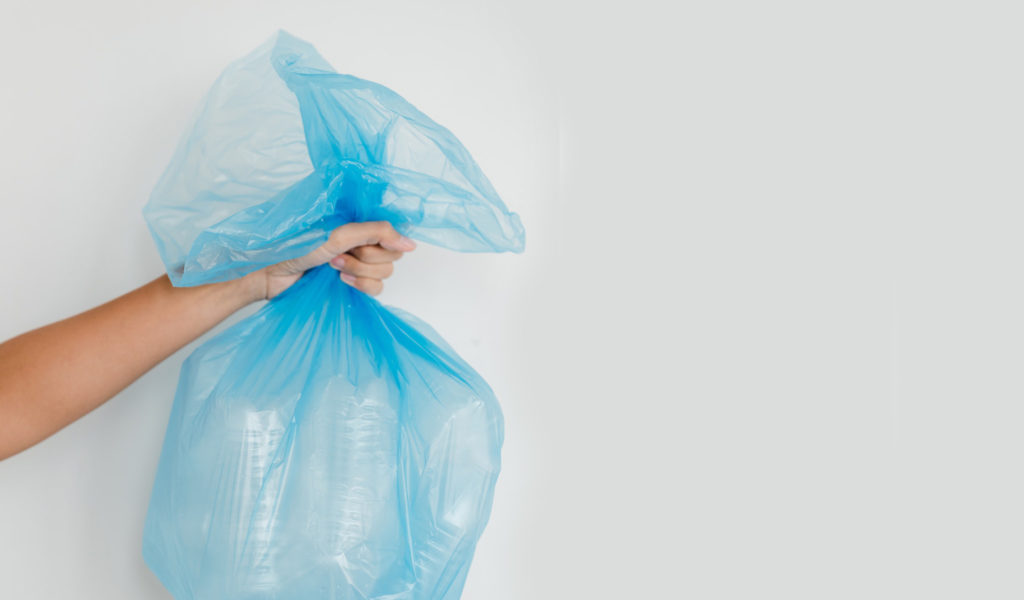The zero-waste movement is seen as one of the many ways that individuals can reduce their environmental impact by taking control of their consumption and waste generation. It focuses on three underlying principles: producer responsibility, political responsibility, and community responsibility. Naturally, individuals have some say over all three of these elements, however, it is perhaps in the community that individuals have the most agency.
Here then, we’ll explore what zero waste means for individuals and communities, what it looks like when we bridge the gap between communities and government, and how you can work towards implementing an effective zero-waste strategy at home and continue to put pressure on businesses to make broader changes that benefit everyone in society.
What is zero waste?
The Zero Waste International Alliance defines zero waste as “the conservation of all resources by means of responsible production, consumption, reuse and recovery of products, packaging and materials without burning, and with no discharges to land, water, or air that threaten the environment or human health”.
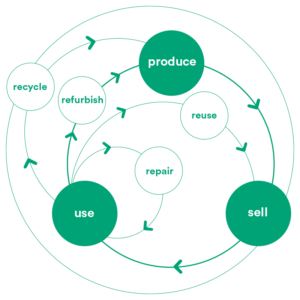
Source: rts.com
It integrates a variety of approaches to waste reduction and resource conservation, including the use and expansion of the “3 Rs”, as well as cradle-to-cradle thinking. The zero waste movement also forms a vital component of the circular economy; an economic model which, with the integration of zero waste, helps to reduce waste by ensuring resources are kept in the loop and that nothing goes to landfill.
The zero-waste movement and the circular economy are vitally important, as they provide alternatives to our current relationships with waste and our material economy, which are inherently unsustainable. As explained in the Story of Stuff, our current relationships with waste lead to the destruction of ecosystems, the consumption of toxic goods, the production of emissions, and the pollution of environments around the globe. They also play a key role in perpetuating social inequality.
Why start a zero-waste journey at home?
While it’s generally accepted that large companies have the biggest impact, beginning your zero-waste journey at home is in no way counterproductive. Naturally, it’s essential that production and waste-disposal practices are dealt with at the highest level, however, there’s a huge range of benefits to working on our individual practices and habits at home.
In 2018 alone, the EPA estimated that 4.9 pounds of municipal solid waste (MSW) was produced per person per day, and this figure looks likely to rise unless we address our waste generation habits today. Combined, we can still make a significant impact by ensuring our consumption habits and waste management practices are more eco-friendly at home.
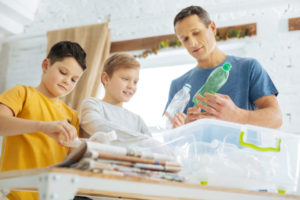
Put simply, going zero waste means reconsidering your relationships with all of the products that you consume. Zero waste is not just about redirecting your products at the end-of-life stage, but also about considering how waste is created throughout the entire lifecycle of the products you buy.
Given the in-depth and holistic examination of your consumption which this necessitates, going zero waste provides an excellent opportunity for you to reassess your consumption habits. Whether that means working to support local producers more closely, buying in bulk to eliminate packaging, or ensuring the products you buy provide a living wage to the workers involved in its manufacturer, zero waste looks at all stages of a product journey.
Integrating a zero-waste journey at home will also allow you to gain more knowledge, experience and intuition as to how to integrate zero-waste practices elsewhere. It can be an excellent stepping stone to encouraging more enterprises to adopt zero-waste principles, and will put you in a better position to help your workplace, school, or community to work towards zero waste.
Similarly, the more families that choose to adopt a zero-waste lifestyle at home, the more pressure we can place on larger businesses to make their own models zero waste. Based on the principles of the tipping point, if 5-25% of the population can adopt zero waste in their own homes, then the zero-waste movement has a much greater chance of gaining traction globally.
Yet even before that threshold is reached, immediate pressure can be put onto suppliers to improve the sustainability of their operations. This can already be seen in a range of markets, as businesses work to reduce their packaging, to make it reusable, or at the very least, recyclable due to growing popular demand from consumers.
A step-by-step guide to zero-waste living
If you and your family are considering taking up the zero waste challenge, the process doesn’t have to be overwhelming. Taking small steps and building on those slowly is the best approach, and here we look at some foundational habits and practices that can help you start your zero-waste journey.
Get educated about reducing waste and how waste is handled where you live
It’s always best to start any significant undertaking from a place of knowledge and preparation. This is especially true with starting your zero-waste journey, as, if implemented properly, this project will manifest in a significant change to your lifestyle.
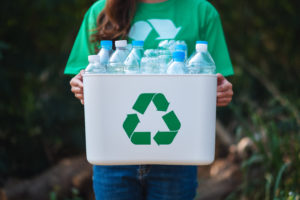
There are two key areas which are especially important to research before beginning your zero-waste journey. These are how other people have implemented zero waste in their own lives, and what facilities are in place locally to help you to undertake this process.
There are plenty of resources and zero-waste guides available explaining how others have gone zero waste. These can be a fantastic source of inspiration, explaining how people have undertaken their own journeys, as well as offering zero-waste solutions in a wide range of settings.
This latter point is especially important, as the economic context in which a zero-waste journey takes place can have a significant impact on the shape of that journey. For example, rural zero wasters are likely to place more emphasis on self-sustenance, and the ways in which they can do so will vary depending on their local climate. In contrast, urban zero wasters will need to focus more on the products they buy.
As such, it’s important to examine zero-waste inspiration from a range of contexts. To help you get started, you can check out this list of zero-waste Books of how to develop a zero waste home, or checkout the Zero Waste blog

Source: zerowaste.com
It’s also important for you to understand the different types of waste, and how they are handled in your local area. This information is incredibly important, as it can help to inform what types of products you buy. If, for example, you have a strong and reliable recycling collection system in your area, then buying metal tins and cardboard packaging is possible within the framework of zero-waste principles.
There may also be organizations in your area which serve other functions, such as upcycling old clothes, or composting food scraps. Depending on what services are available in your area, and how effective they are, you will have to adapt your strategy; either by refusing to buy products which cannot be handled locally, or by finding ways that they can be reused within your home or community.
Itemize your waste habits and brainstorm how you can change them
Within business, most organizations begin their zero-waste journeys with a professional zero waste audit. This is a process in which professional auditors sequester 24 hours worth of business waste and separate it into component types and identify where it’s headed. By identifying what’s headed for landfill, and what is due to be effectively recycled, identifying the waste efficiency of businesses becomes much easier.
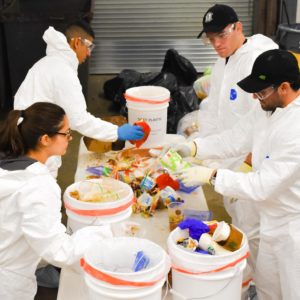
This process is hard to conduct at home, as it’s unlikely that you’ll produce a representative cross-section of your monthly garbage within a 24 hour period. It’s also unlikely that your family will be happy if you decide to store your garbage for a month, then take it apart in your sitting room for analysis.
Nonetheless, there’s lots of inspiration and guidance which can be taken from the process. If you can keep a rough tally of the types of waste you produce over the course of the month, you can get some very valuable information to help you make changes.
You should start by recording the types of waste you produce by material, such as plastic, metal, paper and organics, as well as the source of those types of waste, such as household cleaning products, kitchen products, and the bathroom.
Once you know what types of waste you’re producing and where it comes from, you can begin brainstorming ideas. Based on the inspiration you’ve taken from your research, you should be equipped with lots of ideas of how you can reduce or redirect the waste you’re purchasing.
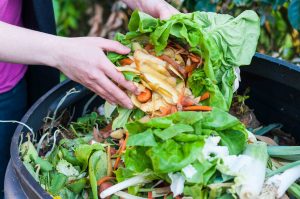
For example, if you are putting a lot of single-use water bottles in the trash, or even if you are recycling them, then a good place to start might be buying a single, permanent water bottle, or maybe a water filter for your home.
Equally, if you recognize that a lot of the waste you produce is food waste, then a good place to start would be with composting. If a lot of the waste you produce is metal, then you should try to find a reliable metal-recycling plant near you, designate a space to collect your metal waste, and leave it to be recycled, or make monthly drop-offs at the plant.
Do the easy things immediately
Once you have created your brainstorm, a good next step is to create a hierarchy, starting with the easiest-to-implement changes at the top, working your way down to changes which are increasingly complex, or require more work.
 As with any kind of implementation, momentum is key. This means that you are more likely to be successful in your zero-waste journey if you can start implementing changes immediately. Using your hierarchy, you should be able to identify the easiest changes to introduce, and use these to build your momentum.
As with any kind of implementation, momentum is key. This means that you are more likely to be successful in your zero-waste journey if you can start implementing changes immediately. Using your hierarchy, you should be able to identify the easiest changes to introduce, and use these to build your momentum.
For example, if you know that you have strong recycling facilities in your area, but don’t currently separate your waste well, then finding separate recycling bins for different forms of waste is quick and easy to introduce change. Setting up a composting system might take slightly longer, and growing your own vegetables even longer still. By starting with the easiest changes, you can develop momentum from the beginning, making it easier to introduce the more complex changes as you go along.
Checklist of zero-waste tips
To help you get started, we’ve compiled a checklist of zero-waste tips, organized by how quickly and easily you can implement them.
Some easy-to-implement changes
- Buying your fruit and vegetables from greengrocers, or loose from supermarkets, can quickly reduce the packaging you bring into your home.
- Prepare some reusable containers which can be used to buy and store dry groceries in bulk. You can either buy new, long-lasting refillable containers, such as glass jars, or, even better, designate containers which you already own.
- Swap plastic bags for long-life shopping bags
Some medium-difficulty changes
-
- Create a compost pile in your garden to give new life to food scraps
- Find local suppliers where you can buy a broad range of goods without packaging. These often include staples, such as rice or lentils, or household goods like cleaning products, toothpaste and conditioner
- If they aren’t available, search for retailers which can sell you packaged items in bulk, and designate spaces for keeping your dry staples.
- Only buy secondhand clothes
Some more complex changes
- Establish a vegetable garden for food without packaging and using food waste
- Improve the insulation in your house to reduce wastage of heat
- Redirect the gray water from your house to your vegetable garden.
Share your success with friends and neighbors
 Once you’re established as a zero-waster, then it’s time for you to spread the word! Implementing zero waste in your own home is a great place to start, but zero waste as a movement requires all of us to work together!
Once you’re established as a zero-waster, then it’s time for you to spread the word! Implementing zero waste in your own home is a great place to start, but zero waste as a movement requires all of us to work together!
There are plenty of ways in which you can share your new knowledge with your friends and neighbors. A great way to do so is to throw a zero-waste party; buying food and vegetables in bulk, cooking bulk food, encouraging your neighbors to bring their own reusable plates and cutlery, and using reusable serviettes instead of disposable napkins are great ways to do so.
The Zero Waste shop also has plenty of zero-waste products, which can either be used in your own home, or given as gifts to help get your community started. Keeping the conversation going and growing is the best way to keep the movement moving!

